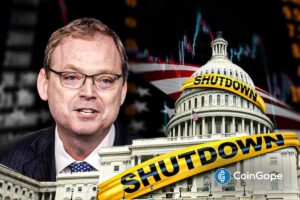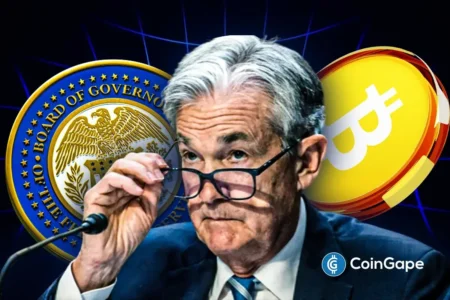Major Withdrawals from Bitcoin ETFs: Analyzing Market Trends and Investor Sentiment
Recent developments in the cryptocurrency market have showcased significant trends, particularly concerning Bitcoin exchange-traded funds (ETFs). Fresh data indicates that BlackRock executed a staggering withdrawal of approximately $473.72 million worth of Bitcoin in a single session, marking the highest withdrawal since the asset manager entered the crypto space. This massive exit has compounded existing market fears during a week characterized by extensive sell-offs, emphasizing the volatility and uncertainty that often accompany such significant market movements.
Bitcoin ETF Withdrawals: A Wider Trend
According to SoSoValue data, the largest withdrawal from the BlackRock Bitcoin ETF specifically amounted to $463.10 million. Other major players in the space have encountered similar patterns; Fidelity’s FBTC recorded over $2 million in outflows, while Grayscale’s GBTC witnessed a reduction of about $25.09 million, continuing its long-standing trend of negative cash flows. Interestingly, only a smaller Grayscale product managed a slight addition of $4.17 million, which did little to counterbalance the substantial outflows. This trend is not isolated to these firms, as other established issuers like Ark 21Shares, Bitwise, VanEck, Invesco, Valkyrie, Franklin, and WisdomTree did not record any inflows, essentially highlighting a robust trend of withdrawal across the industry.
Given this backdrop, a narrative is emerging wherein many investors appear to be cashing out, potentially indicating a broader cash shortage within the market. The necessity to liquidate assets does not necessarily stem from a lack of confidence in Bitcoin itself but rather reflects an urgent need for liquidity as institutions grapple with financial pressures. Such circumstances propel a deeper understanding of the dynamics influencing investor behavior amid market volatility.
Market Stress Shows Disparity Among Crypto Assets
Furthermore, notable analysis by Daan Crypto Trades provides additional context surrounding the significant market stress. The data indicates that the majority of crypto assets have depreciated between 10% and 30% over the past month, with only a handful demonstrating returns exceeding 30%. This pattern suggests an extreme divide between the ‘winners’ and ‘losers’ in the digital asset market, underscoring the challenges investors face throughout this tumultuous trading cycle.
Daan emphasizes the uneven performance throughout the year, cautioning that investors cannot expect superior results from an overly diversified portfolio filled with various tokens. Instead, he advocates for a more focused approach, concentrating efforts on major cryptocurrencies, particularly Bitcoin, when market conditions remain turbulent. His insights reinforce the growing consensus that liquidity tends to gravitate toward more established tokens, especially during times of financial stress.
An Optimistic View Amid Market Chaos
In contrast to the prevailing market sentiment of fear, well-known author Robert Kiyosaki maintains an optimistic stance regarding Bitcoin’s potential. Despite the recent downturns, Kiyosaki is resolute in his decision not to sell Bitcoin, expressing plans to acquire more once the market stabilizes. He articulates his belief that Bitcoin’s fixed supply serves as a robust foundation for its long-term value, differentiating it from more speculative assets.
Kiyosaki’s assertions rotate around the concept that Bitcoin is "real money," which resonates well amid the current climate of uncertainty. His commitment to holding Bitcoin is largely derived from his detached financial situation, allowing him to remain composed while others may panic. The author also references the “Big Print” thesis articulated by analyst Lawrence Lepard, suggesting that escalating global debt levels may compel governments to generate additional money, thereby enhancing the valuation of scarce assets like Bitcoin.
Lessons from Experience: Financial Discipline and Community Learning
Reflecting on his past financial missteps, Kiyosaki emphasizes the importance of financial discipline, developed through earlier experiences. He encourages his followers to educate themselves on market fluctuations, learn from failures, and collaborate in groups to foster community support during challenging economic times. This approach can help individuals maintain focus and leverage collective knowledge during downturns.
While Kiyosaki refrains from giving direct investment advice, he shares his personal journey as a roadmap for others seeking insight into the complex world of cryptocurrencies. His perspective sheds light on the necessity of nurturing financial literacy and resilience, qualities that are especially vital during periods of market distress.
Conclusion: Navigating a Volatile Market Landscape
The current landscape of Bitcoin ETFs and broader cryptocurrency market dynamics presents a complex picture filled with both challenges and opportunities. The massive withdrawals from major funds like BlackRock represent heightened concerns among institutional investors, indicating a potential crisis of liquidity and uncertainty. As the market experiences this pronounced split, coupled with decreasing prices for most assets, strategic decision-making processes become crucial for investors.
Despite facing turbulent waters, voices like Robert Kiyosaki echo a sentiment of hope and resilience. By focusing on the long-term value of Bitcoin and emphasizing the importance of financial discipline, Kiyosaki’s insights resonate in an environment where many other investors are resorting to panic-induced selling.
As crypto enthusiasts and professional investors alike navigate these trying times, understanding market psychology, staying well-informed, and fostering a supportive community will be paramount. While uncertainty looms large, the ongoing dialogue and strategies developed during such times will ultimately shape the future trajectory of not just Bitcoin, but the entire cryptocurrency ecosystem.
















